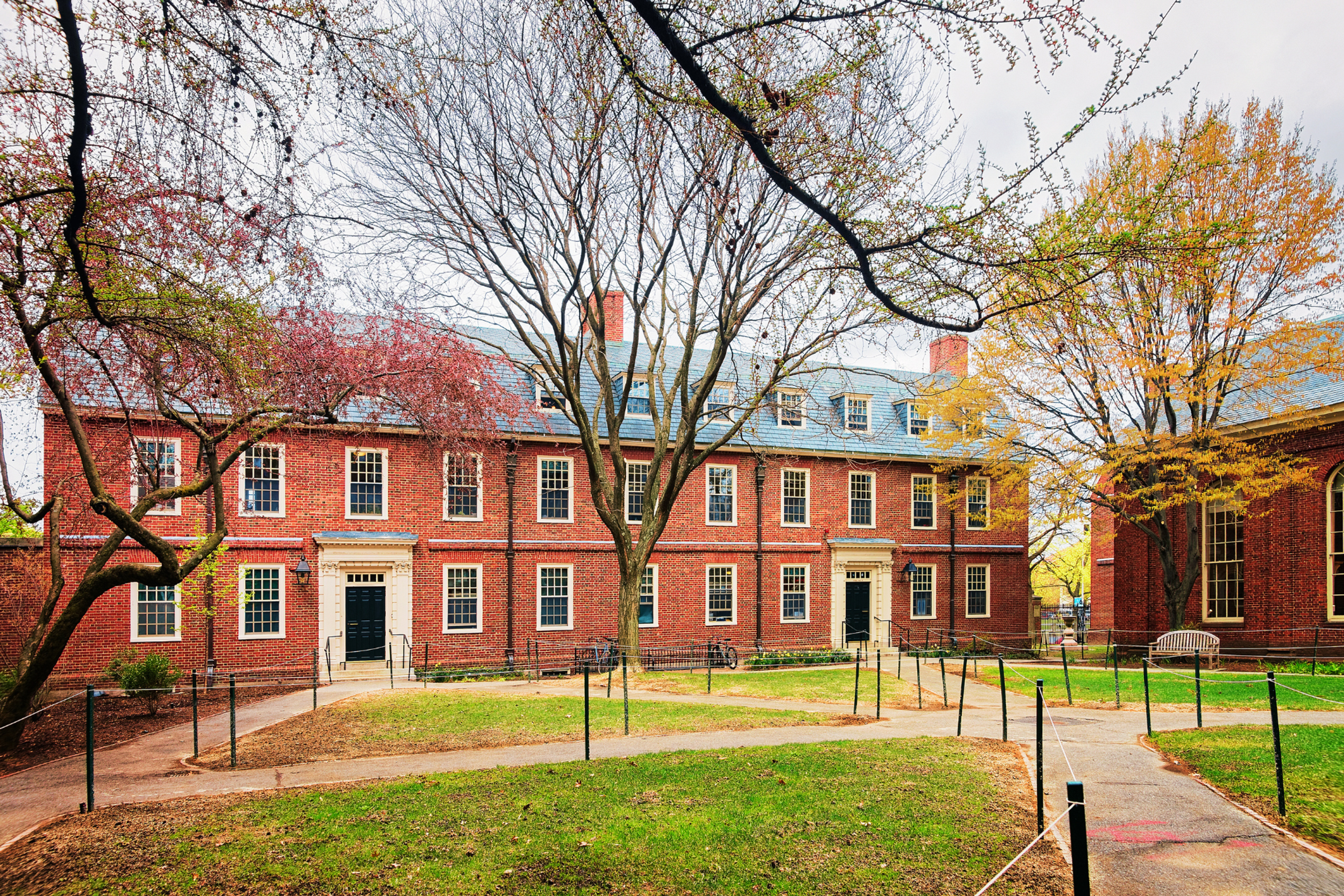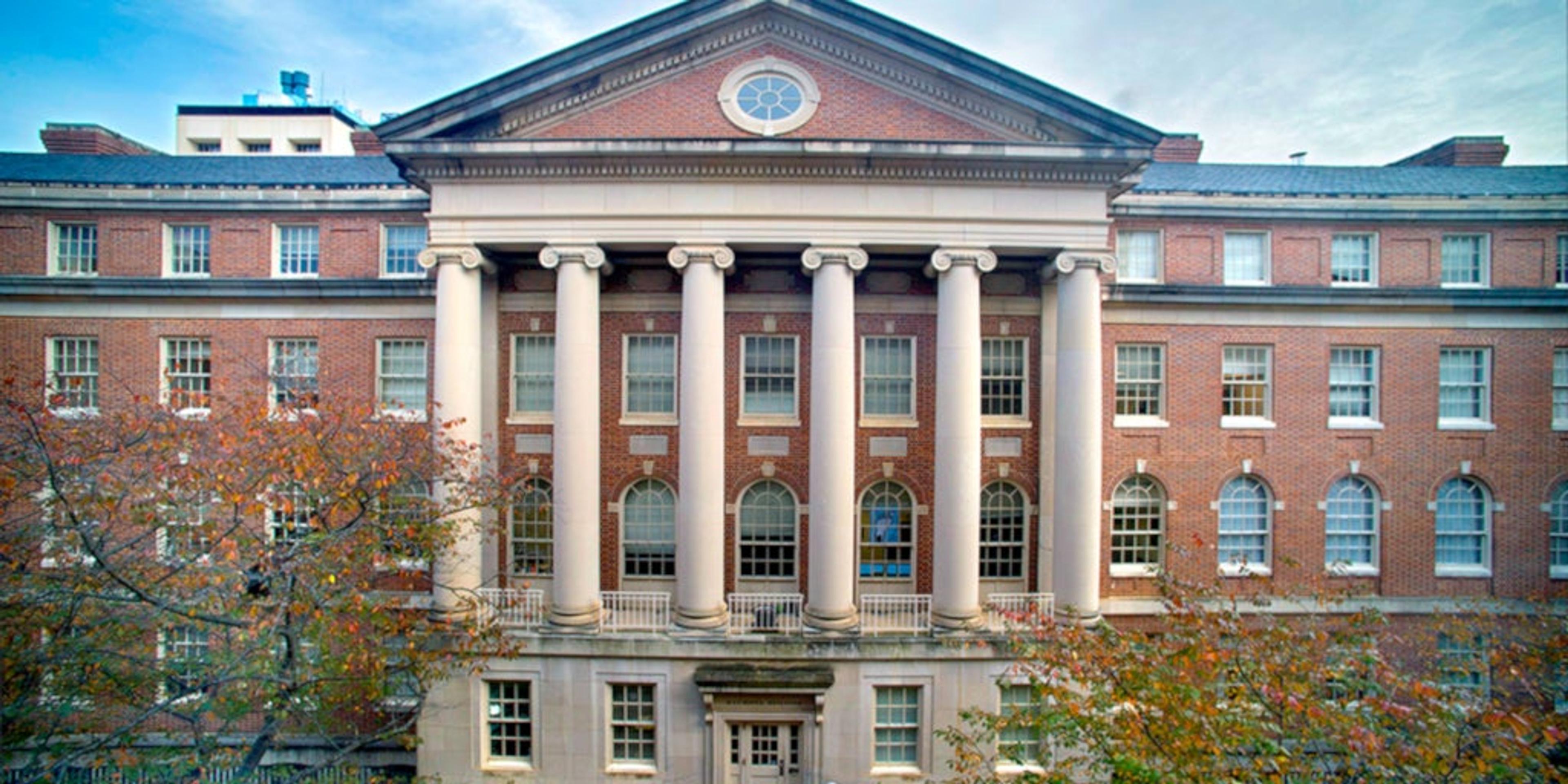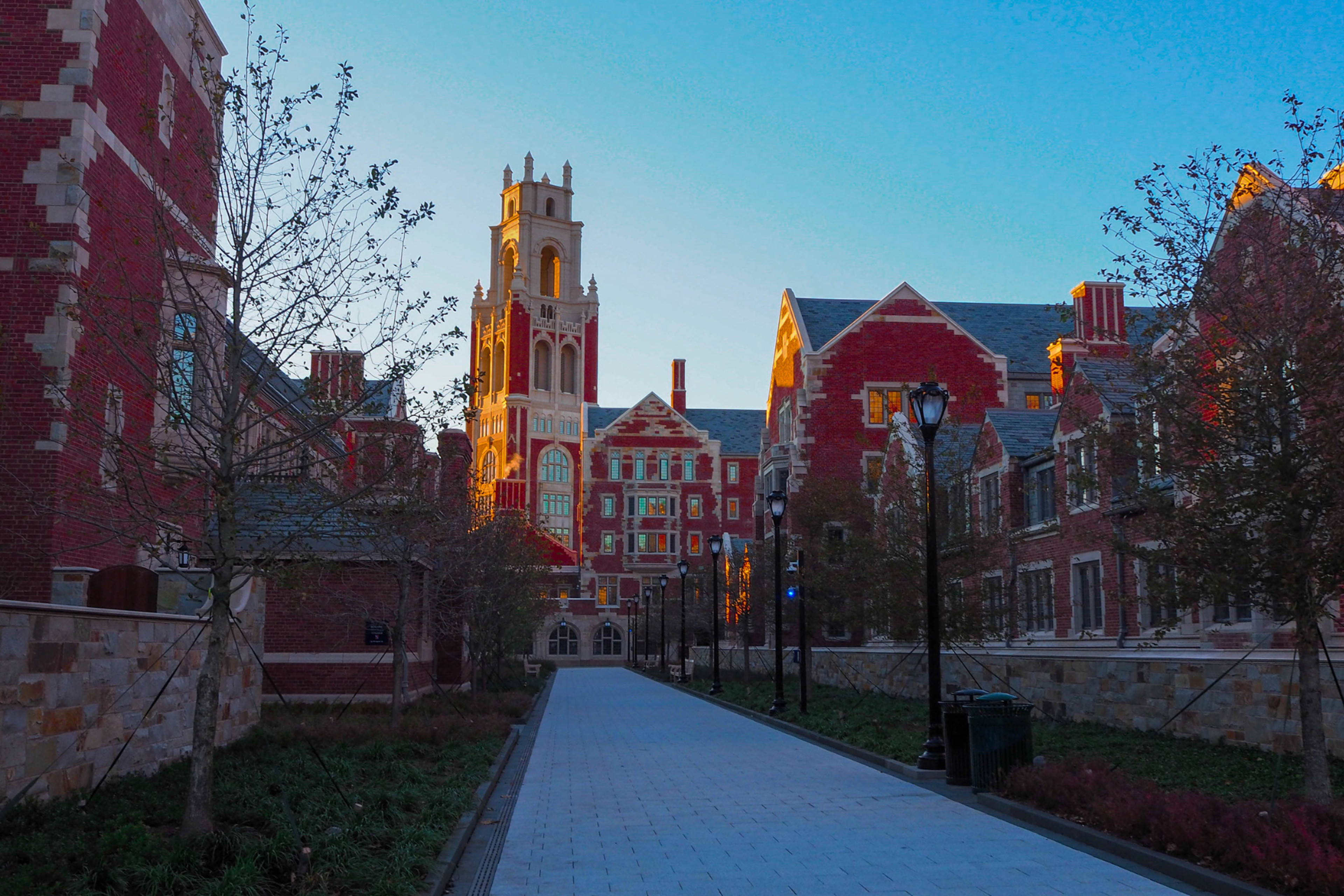Medical School Acceptance Rates, GPA, and MCAT Scores of the Top 15 Programs
Discover the medical school acceptance rates, demographics, class sizes, average GPAs, and MCAT scores of the top 15 medical schools in the U.S. This comprehensive overview will help you determine which program best fits your academic and career goals.
Posted March 6, 2025

Table of Contents
Deciding which medical schools to apply to is a crucial step for aspiring physicians. With over a hundred accredited medical schools in the U.S., each offering unique strengths and varying levels of competitiveness, narrowing down your options can be challenging. This article examines the top 15 medical schools based on acceptance rates and class profiles, assisting prospective students and medical school applicants in making informed decisions about where to submit their applications. Understanding medical school acceptance rates and the admissions process will enhance your ability to choose the right school of medicine for your goals.
If you’re considering applying to medical schools, understanding medical school acceptance rates and class profiles of the top programs will help you make an informed decision about where to apply and what to expect. In this article, we'll review data on average GPA and MCAT scores, diversity statistics, and more. Whether you're just beginning your search or are deep in the medical school admissions process, this guide will give you a better idea of what to expect in terms of competitiveness and requirements.
This article focuses on the medical schools most often ranked in the top 15 overall and specifically for research. However, finding the best fit for you depends on many factors, including location, cost, specialty focus, and resources. Medical schools are highly competitive, with stringent requirements; understanding this information can help you realistically assess your chances at these schools.
Note: Medical School acceptance rates and profile statistics can change with each admissions cycle. Therefore, consider these figures as a general reference to assess the competitiveness of medical schools and determine how well a program fits your academic and career goals.
Acceptance Rates of the Top 15 Medical Schools
Understanding the acceptance rates of top medical schools is crucial for applicants aiming to strengthen their chances of admission. Below is a table summarizing the acceptance rates for the top 15 medical schools in the U.S. These top medical school acceptance rates also illustrate the highly competitive nature of admissions and can guide prospective students in selecting schools that align with their qualifications and goals.
Northeast Ohio Medical University, for instance, has a notably low top school acceptance rate of 1.20% for the entering class of 2023, serving as a benchmark to illustrate the competitiveness of medical school admissions.
This highlights the competitive environment prospective medical school applicants face. Understanding medical school acceptance rates is an important part of the admissions process, as it provides insight into the likelihood of acceptance based on the total number of applicants. Knowing these acceptance rates can help you evaluate your chances at different medical schools and shape your application strategy.
| Medical School | Acceptance Rate |
|---|---|
| Harvard Medical School | 3.3% |
| NYU Grossman School of Medicine | ~2.1% |
| Johns Hopkins School of Medicine | 4.5% |
| University of Pennsylvania Perelman School of Medicine | 3.8% |
| Columbia Vagelos College of Physicians & Surgeons | 3.6% |
| Stanford School of Medicine | ~1.4% |
| UCLA David Geffen School of Medicine | 2.4% |
| Washington University School of Medicine in St. Louis | 7.5% |
| Yale School of Medicine | 4.7% |
| UCSF School of Medicine | 2.6% |
| Duke School of Medicine | ~4% |
| University of Pittsburgh School of Medicine | 3.5% |
| University of Michigan Medical School | 5.6% |
| Mayo Clinic Alix School of Medicine | 4.2% |
| University of Washington School of Medicine | 4.5% |
1. Harvard Medical School
Harvard Medical School Acceptance Rate: 3.3%
Class Profile
- Women: 56%
- Underrepresented in Medicine: 20%
- Science Majors: 67%
- Average GPA: 3.9
- Average MCAT Score: 520.06
- BBFL: 130.28
- CARS: 128.85
- CPBS: 130.15
- PSBB: 130.78
- Average Debt at Graduation: $108,382 (2022)
- Percentage Receiving Financial Aid: 75%
- Average Annual Scholarship: $52,086
- Number of Applicants: 6,914
- Number of Interviews: 857 (12.4%)
- Class Size: 164
What is Harvard Medical School Known For?
Harvard Medical School stands out for its rigorous academic environment and its significant research output. The class profile showcases an average GPA of 3.9 and an average MCAT score of 520.06, reflecting the caliber of medical students, who gain admission.
In addition to a strong emphasis on research, Harvard focuses on producing well-rounded physicians with expertise in various medical fields, including primary care and specialty care. The University School of Medicine also has a notable commitment to financial aid, with 75% of students receiving assistance, ensuring that talented individuals can pursue their medical education without financial barriers.
Read: Harvard Medical School: Tuition & Fees Breakdown and Harvard Medical School Financial Aid & Scholarships
2. New York University Grossman School of Medicine
NYU Medical School Acceptance Rate: 2.1%
Class Profile
- Women: 56%
- Underrepresented Minorities: 23%
- In-State Residents: 15%
- Median GPA: 3.96
- Median MCAT Score: 522
- Number of Applicants: 8,361
- Number of Interviews: 1,037 (12.4%)
- Class Size: 102
What is NYU Grossman Known For?
NYU Grossman School of Medicine is recognized for its innovative curriculum and focus on primary care. The school offers an accelerated three-year MD program, significantly reducing student tuition costs. Its commitment to diversity and support for underrepresented minorities is evident in its student demographics.
Read: Insider's Guide: How to Get Into NYU Medical School
3. Johns Hopkins University School of Medicine
Johns Hopkins Medical School Acceptance Rate: 4.5%
Class Profile
- Women: 54%
- Underrepresented in Medicine: 10%
- Average GPA: 3.94
- Average MCAT Score: 521
- Number of Applicants: 6,352
- Number of Interviews: 576 (9%)
- Class Size: 118
What is JHUSOM Known For?
Johns Hopkins University School of Medicine is renowned for its research contributions and clinical training. The institution excels in several specialties, including anesthesiology, internal medicine, and pediatrics, making it a premier choice for students passionate about advancing medical science.
Read: Johns Hopkins University School of Medicine: Admission Requirements and Application Process and The Ultimate Guide to Johns Hopkins Medical School
4. University of Pennsylvania Perelman School of Medicine
Perelman Medical School Acceptance Rate: 3.8%
Class Profile
- Women: 52%
- Black, Hispanic, Asian, or Native American Students: 62%
- In-State Residents: 8%
- Combined Degree (MD/PhD): 19%
- Average Age: 24
- Science Majors: 70%
- Average GPA: 3.92
- Average MCAT Score: 521.7
- Class Size: 156
What is Perelman Known For?
Perelman School of Medicine at the University of Pennsylvania is celebrated for its outstanding research programs and commitment to primary care. The school emphasizes interdisciplinary education and offers numerous opportunities for students to engage in cutting-edge research.
5. Columbia Vagelos College of Physicians and Surgeons
Columbia Medical School Acceptance Rate: 3.6%
Class Profile
- Women: 49%
- Underrepresented Minorities: 28%
- First-Generation Students: 10%
- MD/PhD Students: 10%
- Median GPA: 3.93
- Median MCAT Score: 521
- Number of Applicants: 8,080
- Number of Interviews: 852 (10.5%)
- Class Size: 140
What is Columbia VP&S Known For?
Columbia Vagelos College of Physicians and Surgeons stands out among medical colleges for its robust curriculum and significant research opportunities. The school provides students with comprehensive training in various fields of health sciences, including psychiatry human medicine, and surgery.
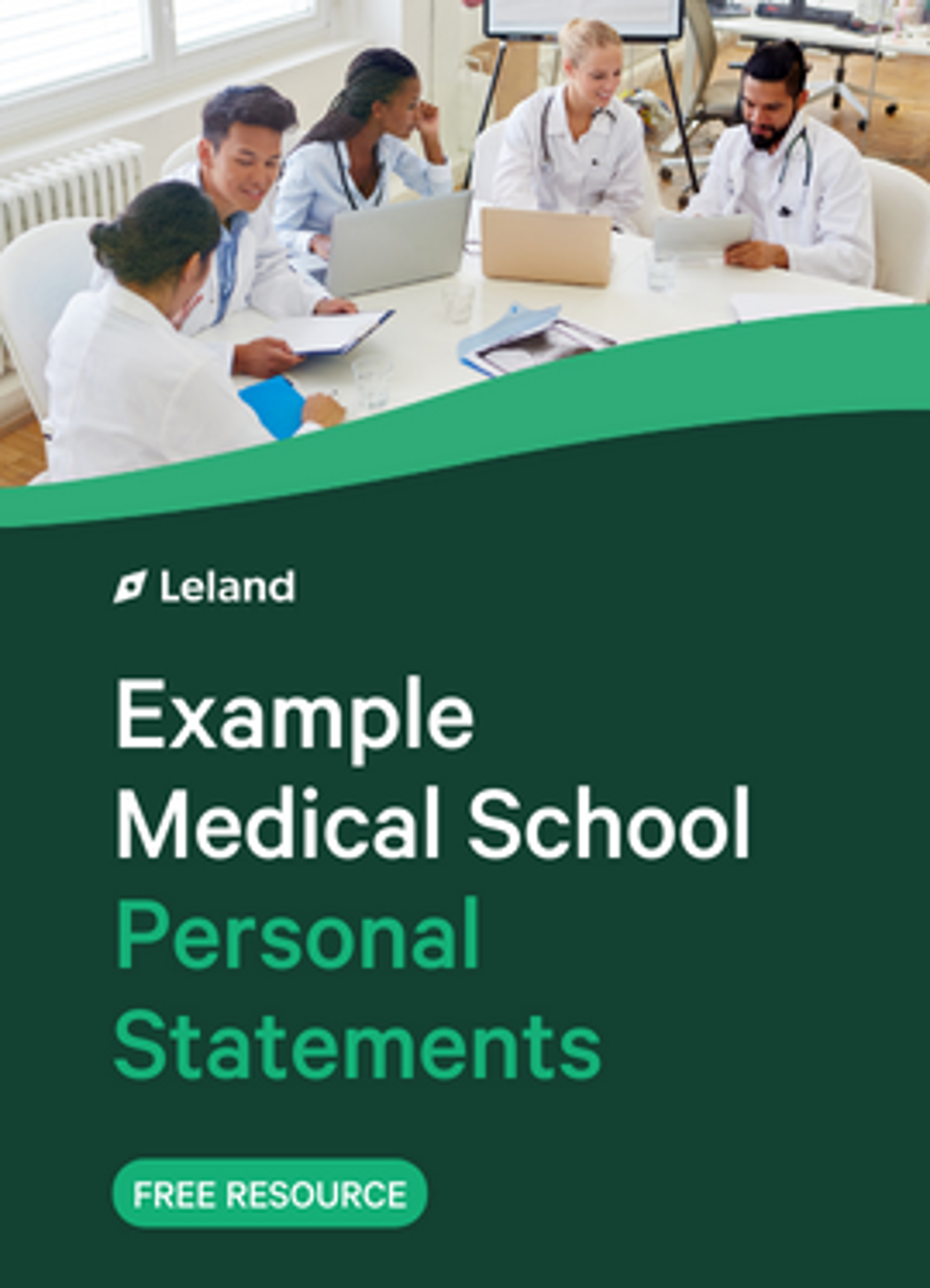
Example Medical School Personal Statements
Read the personal statements that got applicants into schools like Harvard Medical School and the Stanford School of Medicine.
6. Stanford University School of Medicine
Stanford Medical School Acceptance Rate: 1.4%

Class Profile
- Women: 56%
- Underrepresented in Medicine: 38%
- First-Generation Students: 12%
- LGBTQ+: 14%
- International/DACA Students: 13%
- Median GPA: 3.89
- Median MCAT Score: 517
- Full Scholarship Recipients: 37%
- Number of Applicants: 6,800
- Number of Interviews: 470 (6.9%)
- Class Size: 90
What is Stanford Med Known For?
Stanford University School of Medicine is recognized for its focus on research and innovation. With a diverse student body and a commitment to supporting underrepresented groups, Stanford the college of medicine is an excellent choice for those seeking to make significant contributions to the field of medicine and health sciences.
Read: Stanford University School of Medicine: Admission Requirements and Application Process
Get Into a Top Medical School With the Help of an Expert
These numbers give med school applicants a good rough estimate of the class profiles and application cutoffs. However, these numbers change every application cycle; so, while they can provide an idea of what it takes to be admitted, there is no guarantee. Typically, GPA and MCAT scores matter more for medical school applications than for other graduate programs, because it’s so academically rigorous. Put together the best application you can, and give yourself the best chance for success.
The best way to get your medical school application back in tip-top shape is to work one-on-one with an expert med school admissions coach. Below are a few of our highest-rated coaches; browse all of them here.
7. University of California–Los Angeles David Geffen School of Medicine
UCLA Medical School Acceptance Rate: 2.4%
Class Profile
- Women: 56%
- Underrepresented Minorities: 30%
- In-State Residents: 15%
- Median GPA: 3.96
- Median MCAT Score: 522
- Number of Applicants: 13,101
- Number of Interviews: 945 (7.2%)
- Class Size: 181
What is UCLA Med Known For?
The David Geffen School of Medicine at UCLA is renowned for its excellence in medical education, research, and patient care. Consistently ranked among the nation's top medical schools, it achieved the #10 position in primary care and #18 in research in the U.S. News & World Report rankings. The school offers a diverse range of specialty programs, including pediatrics, internal medicine, psychiatry, anesthesiology, family medicine, obstetrics and gynecology, radiology, and surgery, all of which are highly regarded nationally.
Affiliated with UCLA Health, the medical school provides students with access to leading hospitals and clinics, fostering a comprehensive and hands-on medical education. Its commitment to diversity and inclusion is evident, ranking #13 in the diversity index, reflecting a student body that mirrors the diverse population of California. The David Geffen School of Medicine at UCLA is also recognized for its significant research contributions, with faculty and students engaging in groundbreaking studies that advance medical knowledge and improve patient outcomes.
Read: UCLA Medical School: Application & Program Overview
8. Washington University in St. Louis School of Medicine
Washington University Medical School Acceptance Rate: 7.5%
Class Profile
- Women: 52%
- Underrepresented Backgrounds: 41.9%
- First-Generation Students: 4.8%
- Average GPA: 3.86
- Average MCAT Score: 520.2
- Average Debt at Graduation: $107,412
- Class Size: 124
What is WUSM Known For?
Washington University School of Medicine in St. Louis is renowned for its rigorous academic programs and strong research and primary care emphasis. The school prepares its graduates for leadership roles in the medical field.
9. Yale School of Medicine
Yale Medical School Acceptance Rate: 4.7%
Class Profile
- Women: 50%
- Underrepresented in Medicine: 28%
- First-Generation Students: 13.5%
- International Students: 7.8%
- Median GPA: 3.9
- Median MCAT Score: 520
- Average Debt at Graduation: $122,944
- Number of Applicants: 6,236
- Class Size: 104
What is YSM Known For?
Yale School of Medicine is distinguished by its unique curriculum that eliminates grades for the first two years, fostering a collaborative learning environment. The school is committed to biomedical research and primary care.
Read: Yale School of Medicine: Your Guide to the MD Admissions
10. UCSF School of Medicine
UCSF Medical School Acceptance Rate: 2.6%
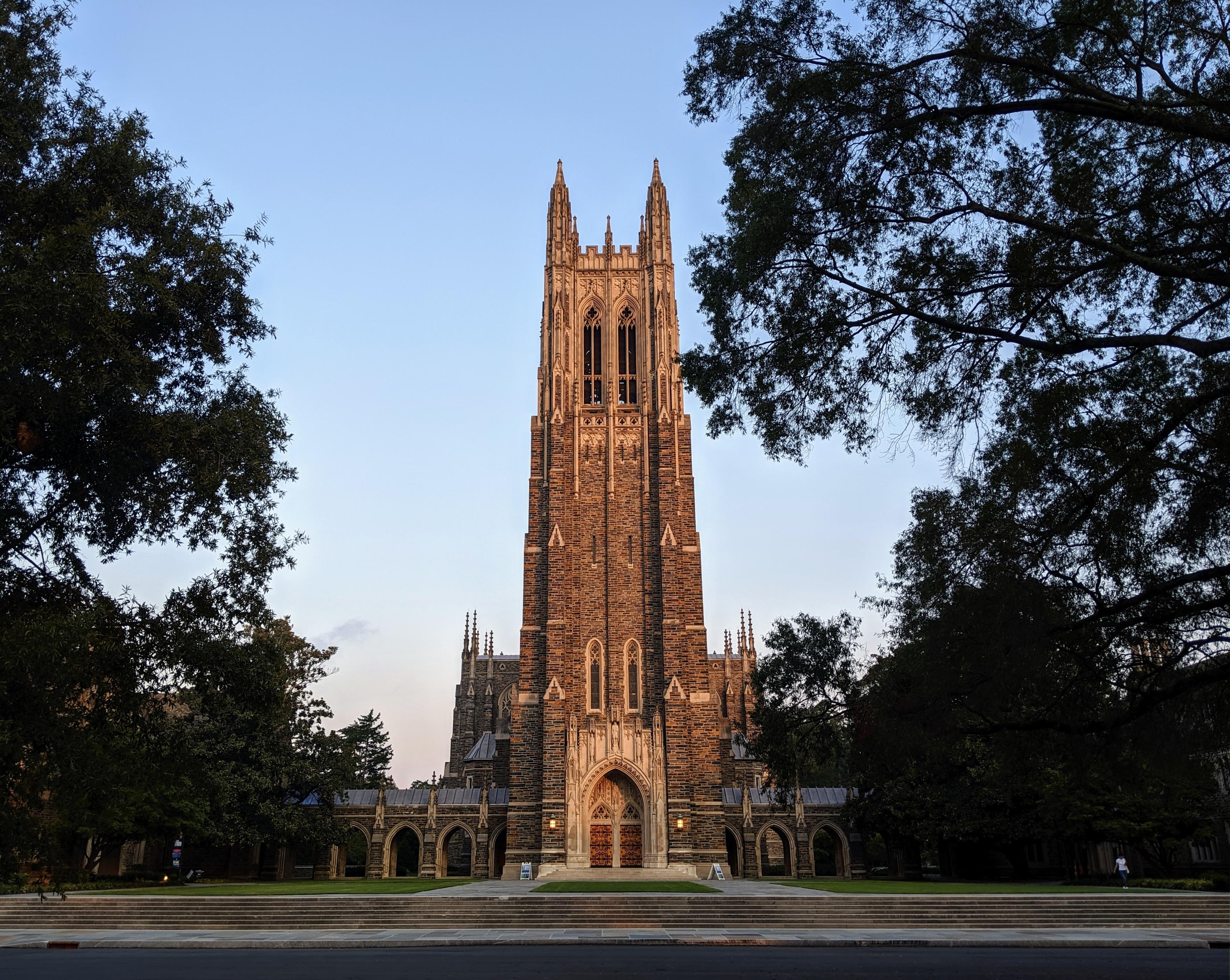
Class Profile
- Women: 59%
- Underrepresented in Medicine: 54%
- First-Generation Students: 17%
- California Residents: 71%
- Median GPA: 3.87
- Median MCAT Score: ~515
- Number of Applicants: 9,090
- Number of Interviews: 544 (5.98%)
- Class Size: 167
What is UCSF Known For?
The UCSF School of Medicine is known for its commitment to research and world-class faculty. The school offers numerous opportunities for students to engage in innovative health sciences initiatives.
Read: UCSF Medical School: Admissions, Programs, and Tuition Costs
11. Duke School of Medicine
Duke Medical School Acceptance Rate: ~4%
Class Profile
- Women: 73%
- Underrepresented Minorities: 30%
- Median GPA: 3.86
- Median MCAT Score: 519
- Number of Applicants: 4,798
- Number of Interviews: 541 (11.3%)
- Class Size: 105
What is Duke Known For?
Duke School of Medicine emphasizes research and clinical training across various specialties, including anesthesiology and internal medicine. The school of medicine's strong focus on community health prepares graduates to address diverse healthcare needs.
Read: Duke University School of Medicine: Admission Requirements and Application Process
12. University of Pittsburgh School of Medicine
Pittsburgh Medical School Acceptance Rate: 3.5%
Class Profile
- Women: 65%
- Underrepresented Minorities: 14%
- Average Age: 24
- In-State Residents: 27%
- Science/Math Majors: 59%
- Median GPA: 3.88
- Median MCAT Score: 517
- Number of Applicants: 8,393
- Number of Interviews: 931 (11.1%)
- Class Size: 153
What is Pitt Med Known For?
The University of Pittsburgh School of Medicine is recognized for its emphasis on primary care and public and health sciences. The school provides a comprehensive education that prepares students for various medical careers.
13. University of Michigan Medical School
Michigan Medical School Acceptance Rate: 5.6%
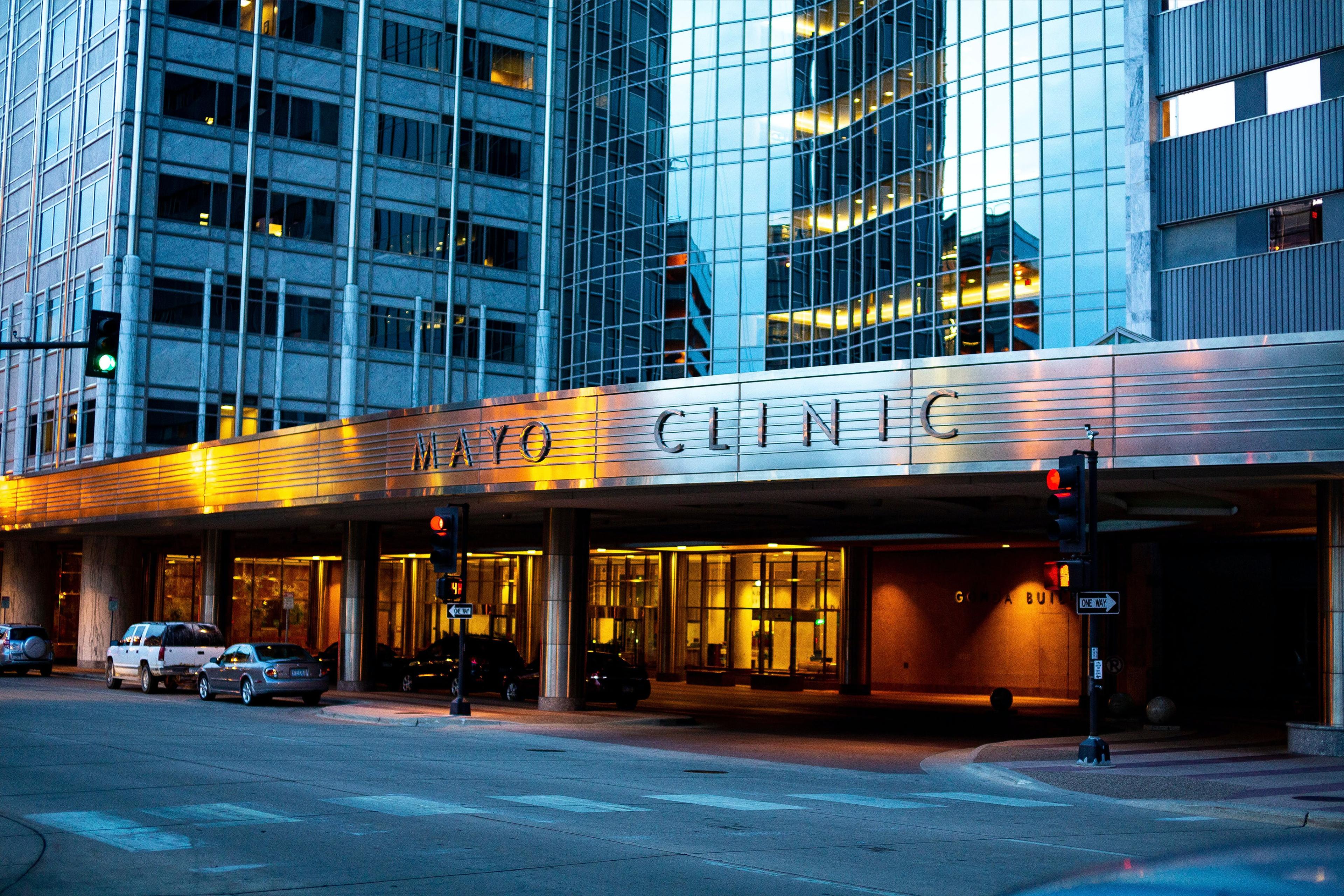
Class Profile
- Women: 58.3%
- Underrepresented in Medicine (AMCAS): 15.5%
- LGBTQIA+: 20.8%
- First-Generation Students: 10.7%
- In-State Residents: 42.9%
- Straight from Undergrad: 10%
- Average Age: 24.7
- Average GPA: 3.80
- Average MCAT Score Percentile: 91.12%
- Students Receiving Financial Aid: 78%
- Number of Applicants: 9,385
- Number of Interviews: 408 (4.3%)
- Class Size: 168
What is UMich Medical School Known For?
The University of Michigan Medical School is recognized for its robust research programs and emphasis on the biomedical sciences and engineering. It offers a diverse range of specialties, preparing students for leadership roles in both clinical practice and research. The medical school also’s commitment to community engagement and health disparities ensures that graduates are well-equipped to serve various populations effectively.
Read: University of Michigan Medical School: Admission Requirements and Application Process
14. Mayo Clinic Alix School of Medicine
Mayo Medical School Acceptance Rate: 4.2%
Class Profile
- Women: 53%
- Underrepresented in Medicine: 30%
- Median GPA: 3.94
- Median MCAT Score: 521 (98th percentile)
- Number of Applicants: 4,681
- Number of Interviews: 726 (15.5%)
- Class Size: 50 (Arizona campus); 55 (Minnesota campus)
What is MCASOM Known For?
Mayo Clinic Alix School of Medicine is known for its patient-centered approach to medical education and its strong emphasis on research. The school's small class sizes foster a supportive learning environment, and students benefit from extensive clinical opportunities at the renowned Mayo Clinic.
Read: Mayo Clinic Alix School of Medicine: Admission Requirements and Application Process and Mayo Clinic School of Medicine: Acceptance Rate Overview (2024)
15. University of Washington School of Medicine
Washington Medical School Acceptance Rate: 4.5%
Class Profile
- Women: Unknown
- Underrepresented in Medicine: 17%
- Disadvantaged (Self-Designated): 21%
- Military: 3.3%
- Average Age: 24
- Average GPA: 3.68 (2021)
- Average MCAT Score: 510 (2021)
- Number of Applicants: 7,632
- Number of Interviews: 774 (10.1%)
- Class Size: 270
What is the UW School of Medicine Known For?
The University of Washington School of Medicine is recognized for its dedication to primary care and family medicine. The school has a strong focus on serving rural and underserved communities, equipping students with the skills to address a diverse range of healthcare needs.
Read: University of Washington School of Medicine: Admission Requirements and Application Process
Other Notable Medical Schools Across the U.S.
- Rowan University School of Osteopathic Medicine
- University of Rochester School of Medicine and Dentistry
- University of Mississippi School of Medicine
- University of Cincinnati College of Medicine
- Texas Health Science Center (various locations, such as UT Health Science Center campuses)
- Quinnipiac University Frank H. Netter MD School of Medicine
- University of Tennessee Health Science Center College of Medicine
- University of Illinois College of Medicine
- Augusta University Medical College of Georgia
- University of Connecticut School of Medicine
- John A. Burns School of Medicine, University of Hawaii
- Texas Southwestern Medical Center (UT Southwestern)
- University of Puerto Rico School of Medicine
- University of South Dakota Sanford School of Medicine
- Virginia Commonwealth University School of Medicine
- University of Maryland School of Medicine
- East Tennessee State University Quillen College of Medicine
- University of Colorado School of Medicine
- University of Kansas School of Medicine
- University of Nebraska Medical Center College of Medicine
- University of New Mexico School of Medicine
- University of Missouri-Columbia School of Medicine
- University of Massachusetts Chan Medical School
Preparing for Medical School Admissions
Understanding the medical school acceptance rates and class profiles of these top medical schools provides valuable insight for prospective medical students. As you prepare for the medical school admissions process, consider your academic strengths, extracurricular activities, and personal experiences.
Working with an expert medical school admissions coach can significantly enhance your medical school application too, offering personalized strategies to help you stand out in a competitive pool of medical school applicants.
FAQs
Which med schools have the highest acceptance rates?
- Acceptance rates for med school can vary year by year, but some of the medical schools typically known for higher acceptance rates include several med schools in the Caribbean and some regional programs in the U.S. For example, the University of New Mexico School of Medicine, a state school, has higher acceptance rates for in-state applicants due to its residency requirements. For specific med school acceptance rate statistics, it’s best to consult the latest admissions data.
What med school has the lowest acceptance rate?
- Stanford School of Medicine and NYU Grossman School of Medicine are often cited as having the lowest top-school acceptance rates ever, sometimes below 2%.
Which medical school is easiest to get into?
- Some Caribbean medical schools are known for more accessible admissions processes compared to U.S. institutions, but this can vary widely based on applicant profiles.
What school sends the most students to medical school?
- The University of California, Berkeley, and the University of Michigan are often recognized for sending a significant number of undergraduates to medical school, reflecting strong pre-med programs.
What is the hardest country to get into a college of Medicine?
- Countries like the United States and the United Kingdom are considered among the most competitive for medical school admissions due to rigorous standards and high applicant-to-spot ratios.
What’s the hardest med school to get into?
- Schools like Harvard Medical School and Stanford University School of Medicine consistently rank as the hardest medical college to gain admission to, due to their low acceptance rates and high academic standards.
Read these next:
- How to Write a Powerful Personal Statement for Medical School
- How to Write a Standout Internal Medicine Personal Statement
- The Best 50+ Free Resources for the MCAT
- MD Application Deadlines of the Top 50 Medical Schools
- The Ultimate Guide to the Medical School Application Process
- Acceptance Rates and Class Profiles of the Top 15 Medical Schools
- The Top 10 Medical Schools in the US

